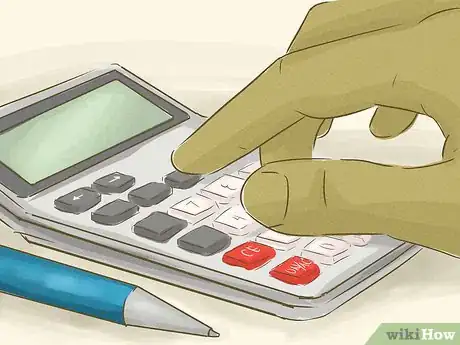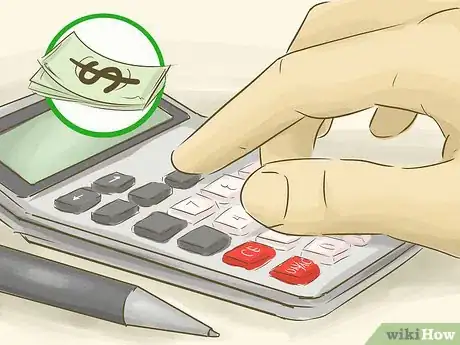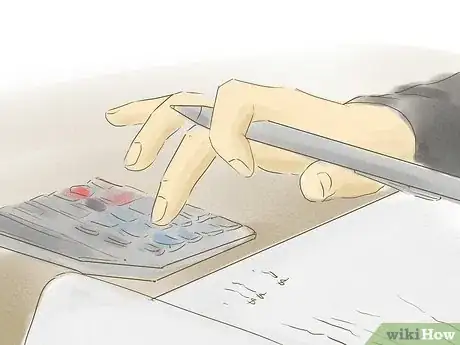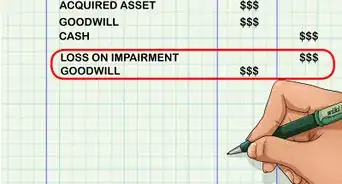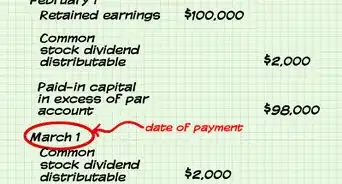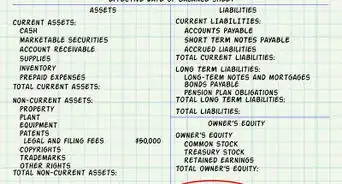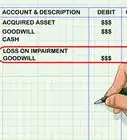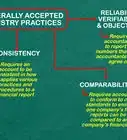This article was co-authored by Michael R. Lewis. Michael R. Lewis is a retired corporate executive, entrepreneur, and investment advisor in Texas. He has over 40 years of experience in business and finance, including as a Vice President for Blue Cross Blue Shield of Texas. He has a BBA in Industrial Management from the University of Texas at Austin.
This article has been viewed 160,792 times.
Interest expense is an expense you incur when you borrow money. Your lender charges you a specific interest rate that is stated in your loan document. As time passes, you are charged interest on the amount that you borrowed. You may need to calculate simple interest or compound interest on your loan, depending on how the loan is structured. If your loan is for business, you will post interest expense to your accounting records.
Steps
Calculating Simple Interest
-
1Understand the interest expense formula. The formula to calculate interest is Interest = Prt where "P" equals Principal, or the amount of the loan outstanding, "r" equals the rate of interest charged, and "t" equals the amount of time that the loan will be outstanding. Your principal is the loan balance that is still owed to the lender. Your rate of interest will be stated in the loan agreement.[1]
-
2Gather your loan information. Assume that the remaining balance on your loan is $10,000. The interest rate stated on your loan agreement is 12% annually. Your interest expense for a 12 month or 1 year period would be $10,000 multiplied by 12%, or $1,200.Advertisement
-
3Adjust the period of time in your calculation. You may need to calculate interest expense for a fraction of a year. Use the same interest rate formula and adjust the time period.[2]
- Determine the period of time to properly recognize interest expense. If you need to calculate three months of interest expense, divide the 12 months by the number of months in the desired period. For example, t = 3/12 or 0.25. If the principal is $10,000 and the interest rate is 12 percent (0.12), the calculation would be Interest = $10,000 x 0.12 x 0.25 or $300.
-
4Use a spreadsheet to calculate interest. You can speed up this process by using a spreadsheet application. label columns A,B.C and D "Principal", "Rate", "Time", and "Interest". In cell A2, insert the Principal amount or $10,000. In cell B2, insert the rate of interest or .12. In cell C2, insert the time where a year or 12 months equals 1. Use multiples and fractions where the period is less or greater than one year. In cell D2, enter the formula (A2*B2*C2).
Calculating Compound Interest
-
1Understand compound interest. Compound interest is the combination of interest earned on the principal during the current period and all previous interest earned but not paid for previous periods. In other words, you earn "interest on interest". With simple interest, the lender only earns interest on the principal amount per annum. For periods of less than year, the lender will receive a pro rata share of the annual interest. For compound interest, all prior interest is added to the principal amount, effectively increases the annual rate earned by the lender. The use of compound interest and the compounding frequency are established in the loan documents.
-
2Learn the compound interest formula. The formula to calculate compound interest in a year is: . In the formula, the variables stand for the following:
- P: Principal, the initial amount borrowed or deposited.
- i: Interest rate in percentage. The interest rate must be adjusted for the number of compounding periods in a year by dividing the interest rate by the number of periods. For example, a 12 percent interest rate compounded monthly would be adjusted to 1 percent (12/12).
- n: Number of Compounding periods in a year multiplied by the loan period in years. Semi-annual compounding is 2, quarterly is 4, monthly is 12, and daily is 360 or 365 depending upon the financial institution.
-
3Find the interest rate. Solve for i in the equation. This is the interest rate adjusted for the compounding periods per year. For example, a 10 percent loan compounded monthly would have an interest rate of 10/12 or 0.00833. (1 + i) in the formula above would be (1 + .00833), or 1.00833.
-
4Solve for the number of compound periods over the term of the loan. Multiply the number of periods per year by the duration of the loan. For example, a 10 year year loan would have 120 periods (10*12).
-
5Solve for the future value of the loan. This is represented by the figure in the formula. Raise the figure is parentheses to the power of n (the number of periods), then multiply by the principal. This will give you the future value of the account.
- For example, the future value of a $10,000 loan compounded monthly at 10% interest would be $27,059.
-
6Subtract the principal to get interest expense. Subtract the present value of the loan (the principal) from the future value to arrive at the interest paid over the full ten year period: $27,059 - $10,000 = $17,059.Note that the actual amount may vary depending upon the number of decimal places in the interest rate.
- Calculating the compound interest rate for a single year uses the same formula adjusting for the principal amount each year. For example, the first year’s interest on a $10,000 loan compounded monthly at 10% would be $1,047. To calculate the second year’s interest, add the previous year’s interest ($1,047) to the principal amount ($10,000) and recalculate. Interest for the second year would be $1,156.
- There are a number of free compound interest calculators on the Internet.
Posting an Accounting Entry
-
1Determine if your interest expense is business related. If you borrowed money to operate a business, interest expense should be posted to your accounting records. This applies to both simple interest and compound interest calculations.
-
2Use the accrual method of accounting. The accrual method recognizes revenue when it is earned and expenses when they are incurred. This accounting method matches revenue with expenses. It is a better indicator of company profit than the cash method of accounting. The cash method recognizes revenue when cash is received. Expenses are posted when cash is paid.[3]
- Generally Accepted Accounting Principles (GAAP) requires most businesses to use the accrual method of accounting. Companies of all sizes can benefit from conforming with GAAP.
-
3Posting interest expense entries. Assume, for example, that you need to post $100 of interest for the month of December. Also assume that you will pay the December interest on January 15th of the following year.
- On the last day of the month (December 31st), you would post one month of interest as interest expense.
- Your accounting entry on 12/31 is to debit (increase) interest expense $100 and to credit (increase) interest payable $100.
- On January 15th, when interest is paid, you would debit (reduce) interest payable $100 and credit (reduce) cash $100.
- The cash method would require you to post the interest expense when cash is paid (January 15th). The $100 of interest expense should be posted in December, since that is the time period when the interest was incurred.
- Interest expense is posted to the income statement with other expenses. The income statement formula is (revenue less expenses equals net income).
References
About This Article
To calculate interest expense, locate the balance of your loan and the interest rate specified on your loan agreement, which will be a percentage. Next, convert the percentage to decimal format by putting a decimal after the number and moving the decimal 2 places to the left. Then, multiply the loan amount by the decimal to get the total interest. Finally, divide your answer by 12 to calculate monthly interest. For tips on using a spreadsheet to make your calculations, read on!





